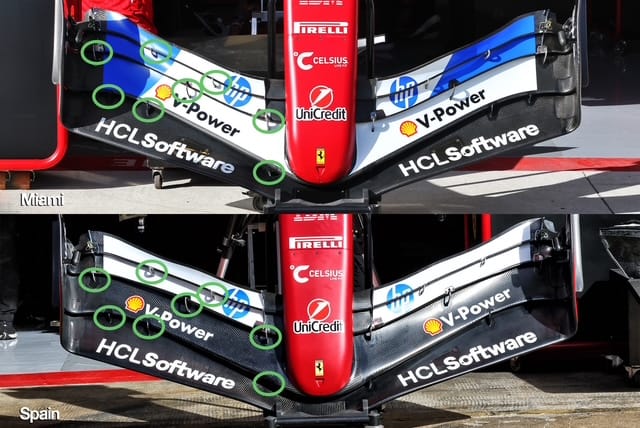The long-awaited introduction of the flexi-wings technical directive for the Spanish Grand Prix weekend means there’s much excitement about Formula 1 teams' potential new front wing designs.
But as mentioned in my earlier article about the more stringent front wing deflection tests, I am not expecting too much of a change in the geometry of the parts.
That’s because any changes will be hidden within the wing structure and the carbon lay-up. Like most developments, it will be invisible to the viewers and enthusiasts. We will have to see if the changes will affect the overall performance; the one thing you can’t hide is the laptime.
Am I expecting Sauber to take over from McLaren at the front of the field? No. But anyone who has had to make a significant change might just take a couple of race weekends to get on top of it.
We should get a closer look at all the teams' front wing on Friday but here's my initial assessment on what's changed on six cars that we were able to get a good look at in the Barcelona pitlane on Thursday.
McLaren
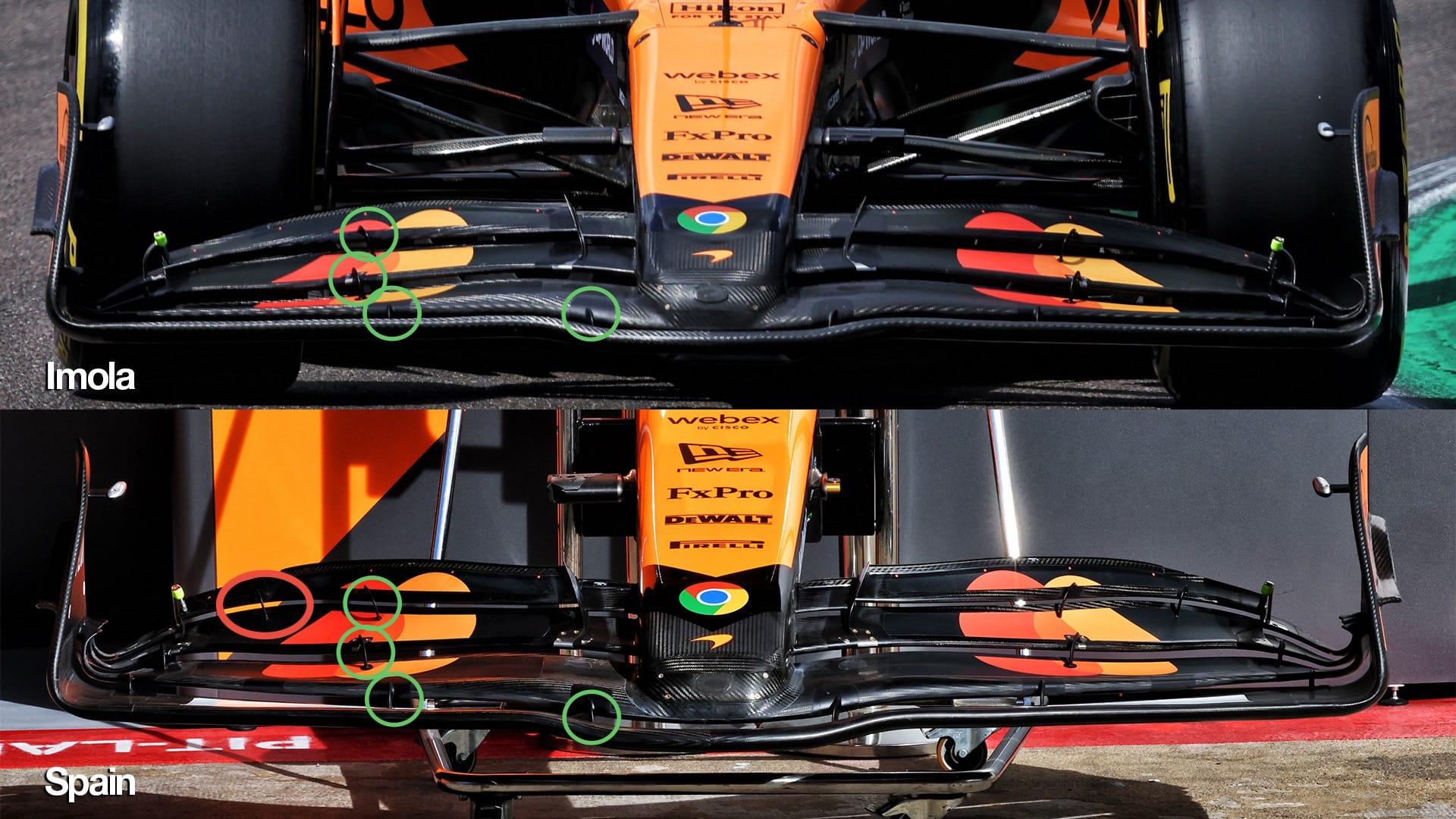
McLaren has added an additional slot gap separator highlighted with the red ellipse on the Spain wing. The green ellipses are all as the previous versions. This could be to reduce the deflection of the trailing edge of the rear flap.
The new tests in that area are more stringent; they have gone from five millimetres to three millimetres, but McLaren may simply want to maintain the relationship between the third and fourth element.
Allowing the slot gap to close up in this area could be detrimental to the wing’s actual performance.
Mercedes
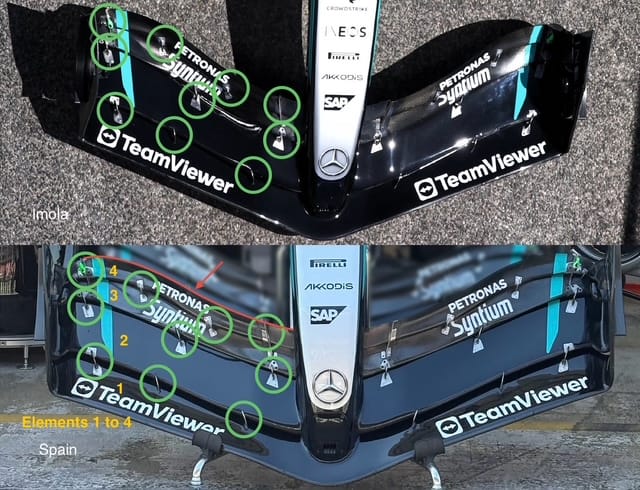
With one wing sitting on top of another wing in the Spain photo, it looks like Mercedes has many more elements than anyone else, so to separate them, I have put a red highlight line on the trailing edge of the one I am looking at.
The regulations require four elements, so it’s the same for everyone. I have also numbered the elements.
However, Mercedes does have more slot gap separators than most of the others, but they appear to be in the same position as at Imola a fortnight ago, so no need for a change there.
Again, Mercedes is running a front wing package that connects directly to the nose, so it's able to spread the loads from the bending test across both elements. Contrary to most other teams, Mercedes has a fairly short chord leading element and a longer chord second element.
This short chord leading element acts more like a leading edge slat used to optimise the attack angle of the flow, because its slot gap is so close to its leading edge it won’t produce much load.
Ferrari
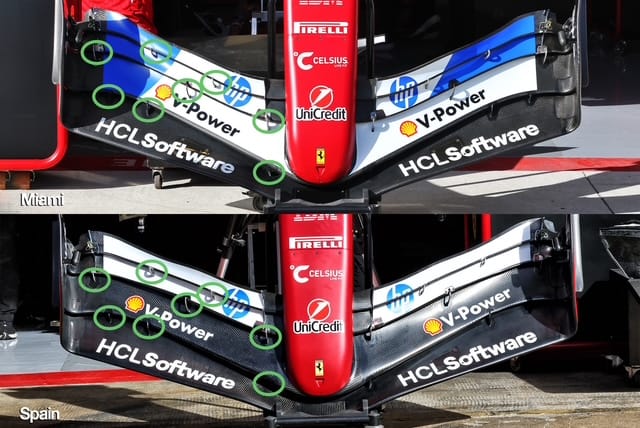
I can’t spot any changes to the Ferrari front wing. I suppose that shouldn’t be a surprise, as it was one of the teams making a lot of noise about what rivals were up to with wing deflection.
The slot gap separators highlighted in the green ellipses all look to be in the same location.
There will always be small changes to the rear flap trim line to suit each circuit, but none of that will affect the structure of the assembly, which will all need to be done internally with the carbon lay-up.
Williams
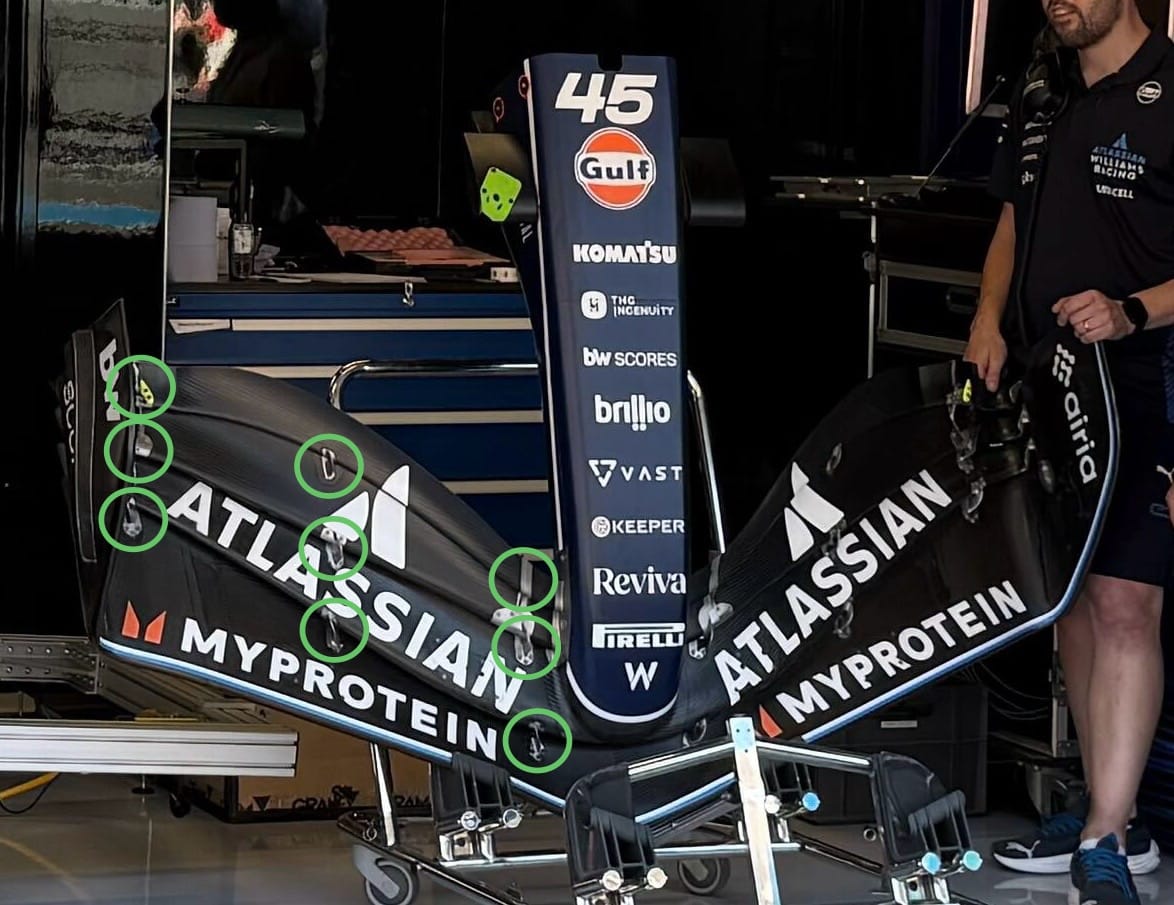
The interesting thing here is how uniform the wing separators are.
Not unlike Ferrari the chord length of the outboard end of the most forward element is very long. This does mean that the second element will be responsible for the majority of the bending resistance, but as it’s the element that is directly mounted to the nose it has the best load path without relying to much on the slot gap separators.
This long chord on the outer end of that forward element could very easily stall when it is near the ground at high speed, and the car rolls so in effect drops off front downforce at speed, which is just what you want.
Alpine
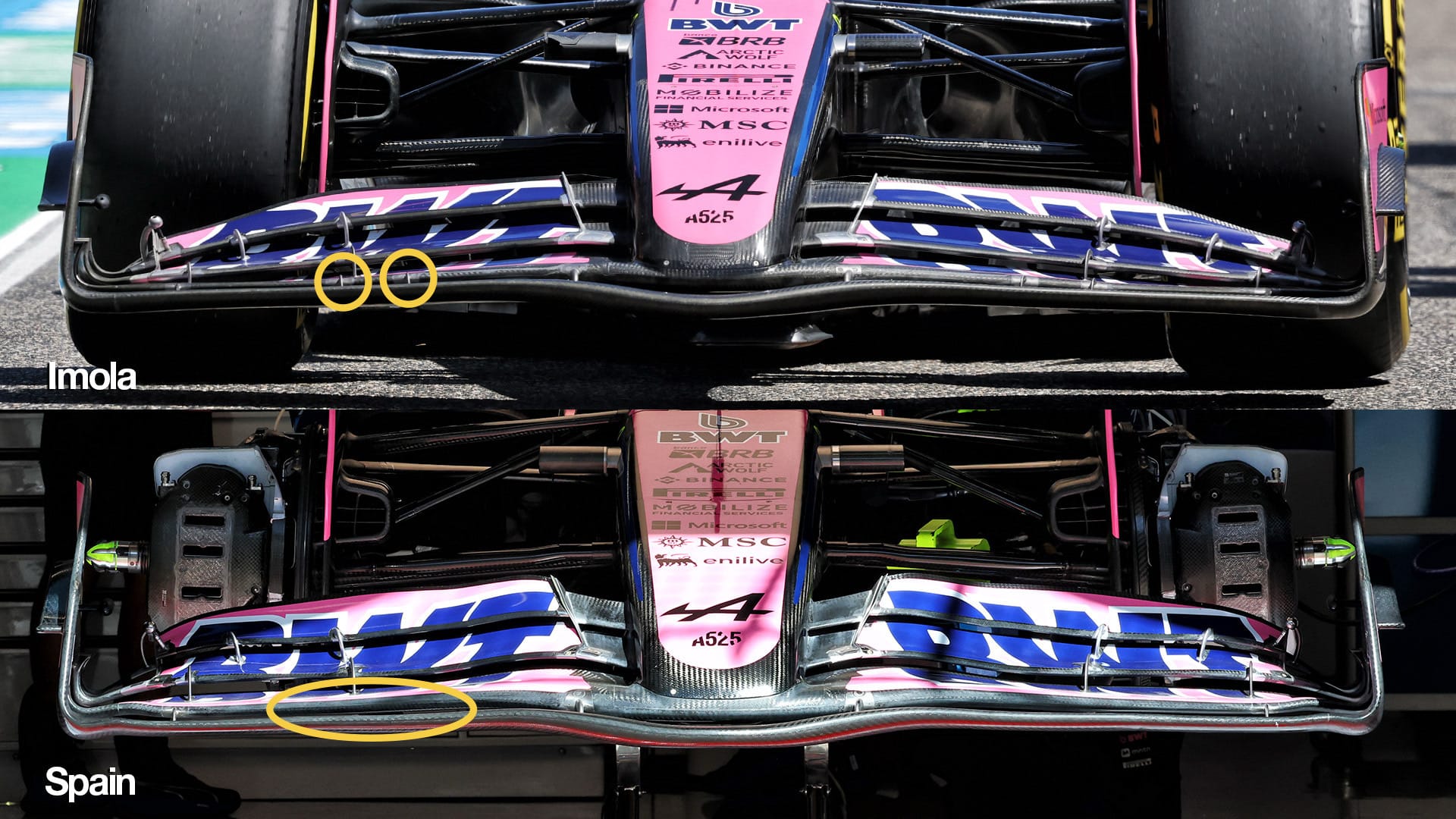
Interestingly, it looks like Alpine has removed two of its slot gap separators, which were between the mainplane and the second plane. I have highlighted them with the yellow ellipses. These are the two structural elements that can affect the new deflection tests.
Sometimes, these slot gap separators are used as flow straighteners to reduce the risk of crossflow when, or if, the wing is working more powerfully in one area than in another, or when the front wheels are steered.
Haas
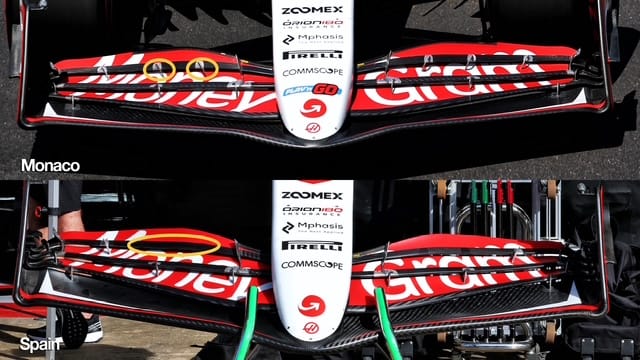
Haas has also removed two of its slot gap separators. These were between the third and fourth elements.
This is sort of understandable. In Monaco, where Haas was actually very competitive, you want as much support as possible for that final element.
The last thing you need is it closing the slot gap and losing front load on a track that doesn’t really have many fast and few very fast corners.


